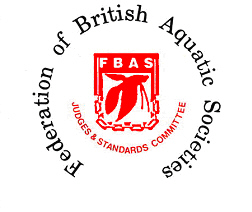



It is impossible to either foresee or solve every problem that is likely to befall the fishkeeper. We will deal with some of the more worrying practical problems here; for fish-related problems, please refer elsewhere on this website.
POWER FAILURE
The first thing to do, if there's a power supply failure is - don't panic!
In the average setting of a normally furnished (and probably centrally-heated) room it would take several hours for the water temperature in a tropical aquarium to fall to lethal limits for the fish.
Further heat loss should be prevented - even before seeking to rectify the power supply failure. (Assuming the power failure is ongoing and not just a blown fuse).
Wrap the aquarium in some form of heat-insulating material - bubble-wrap, blankets or even layers of newspapers. Now you can turn your attention to providing alternative heating (again, presuming a lengthy power shortage).
If you have an another means of heating - gas, for instance - then the best thing to do is fill several containers with hot water and stand or float them in the aquarium to maintain the temperature. Repeat at regular intervals if necessary.
NOTE: You should drain out some of the tank water to allow for water displacement by the containers, otherwise the tank will overflow.
Do not simply drain off some water and replace with heated water as this will alter the water conditions in the tank; the fish may be stressed by sudden exposure to 'raw' water being introduced.
OVERHEATING
Should the aquarium overheat, reduce the temperature by floating ice cubes (contained in a sealed bag) in the water. Alternatively (or additionally), open the hood, turn up the aeration (or add some) and direct a fan to blow air across the water surface to add more cooling.
LEAKS
Sometimes leaks cure themselves, as dirt enters the leakage area and plugs it, so give it a little time before taking drastic action. Otherwise the tank must be drained out, dried fully and aquarium sealant (NOT similar looking kitchen or bathroom sealant) used to re-seal all seams.
Use aquarium sealants in a well-ventilated area and leave the tank to cure for at least 24 hours before refilling.
FILTER NOT WORKING
A sudden stop in water flowing from the filter return can mean a burned out motor or it may have been getting slower without you noticing it.
In the first instance, the remedy is obvious – a new replacement. But, only too often, all that is wrong is that the filter needs cleaning. Apart from rinsing out the filter medium (ALWAYS USE AQUARIUM WATER FOR THIS), take out the impeller and clean off any slime from it and the impeller chamber too.
Occasionally, a filter may stop due to an air-lock developing inside. Give it a shake or even invert it (over a bucket, just in case) to dislodge the air.
AIR PUMP NOT WORKING
An obvious change in sound coupled with no air output indicates a split diaphragm in the pump. Replacement is straightforward but always disconnect from the electricity supply before opening up the pump.
A reduced air flow from the pump points towards two things: firstly, there are two tiny rubber 'flap valves' in the pumps output chamber that may need cleaning.
Secondly, the air pump has to draw its air in from somewhere; usually its through a hole in the base which is protected by a felt filter pad. Over time, this pad gets clogged up and reduces the air supply to the pump. Don't neglect to clean this forgotten component.
Further up the supply line, check that any 'non-return' valve is not clogged, nor are airstones, nor any air-valves that used to regulate the airflow.
ALGAE
The main causes of unwanted algae growth are too much light and/or an excess of 'plant nutrients' in the water, usually nitrates and phosphates.
Make sure you have enough natural plants to make use of all the light available.
Cut down on the intensity of the light (shade the cover glass) rather than cutting down on the light duration – most tropical plants need twelve hours or so a day.
Reduce nitrates by regular partial water changes and use a phosphate remover in your filtration system.
If the algae is the 'soft' green variety, use a natural way of reducing it – import a few vegetarian minded fishes.
© FBAS 2006 RDE/RCM
Last updated April 2006